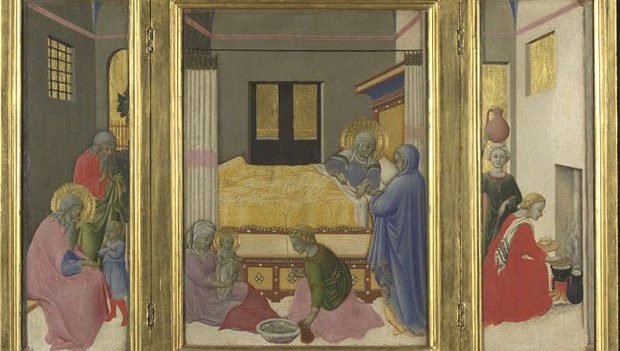National Gallery: 6/6/2011 – 2/10/2011 Free, Photo from the National Gallery website.
Religion and Art
This exhibition serves manifold purposes it glorifies the exquisite, rich and ornate depictions of Italian alter pieces prior to the 1500s, it teaches us of their regional styles and variations whilst conversely mourning their passing into contemporary cultural and scopic insignificance.
Delicate beauty
The refined sublimation, sense of peace, solemnity and purity of art and form captured and distilled into this exhibition can almost only be achieved where the Roman Catholic artistic tradition seeks to venerate its icons and triune deity, attributable to the fact that some of these artists were monks who pondered day and night devoting their entire lives to realizing more perfect ideals of form through which they could pay homage to their faith to produce works yoked with a supernal brilliance that much art of contemporary times fails to exact to the same degree.
Displaced artifacts
Everyone at any level of engagement with art can appreciate what is on display here. The works are powerful and perfect examples of their time preserved sadly no longer within their traditional alter settings but have been removed, displaced by the international cultural institutions only to be enjoyed every so often instead of daily as was there initial function. It is almost hard to draw the parallel between utilitarian art and these religious artworks, yet nevertheless they would have been used as sources of contemplation and reflection on a daily basis.
Themes and Iconography
The complex visual logic as recorded and distilled in the artworks tell of a tradition in which the artist patron relationship was largely controlled by the patron where innovation could only take place by the artist at the most subtle level. The common themes given most acute privilege are that of The Madonna with child, The Crucifixion and The Martyrdom of Saint Sebastien. Common to the majority of paintings was a sense of joyful sorrow that preceded the subject matter, in itself a refrain back to Christianity, to receive ones hope and savior only to crucify them both yet this action is a key precept to biblical foundation of the Christian faith.
Artistic idealism
One can see such ideals discussed as purity being wedded to beauty, solemnity, youth, sacrifice, light and modesty. For example in countless depictions one can recount the stylised manner of the Holy Virgin Mary as the pallid light epitome of human holiness deified with signature halos of light upon the head of the mother and child as diadems of their eternal transience, purity and supernatural power. The verisimilitudenal nature of biblical representation is wedded strongly to reality as a cardinal source and foundation against which the scriptural story unfolds combining both the elements of temporal and supernatural together to form a depiction that often only suggests the sublime awe and majesty of God the Father and the heavens.
OUTLINE
A rich historical taxonomy of regionally classified Italian alter pieces depicting events of the Christian liturgy.
www.nationalgallery.org.uk/whats-on/exhibitions/devotion-by-design
written by: Colin Humphrey
